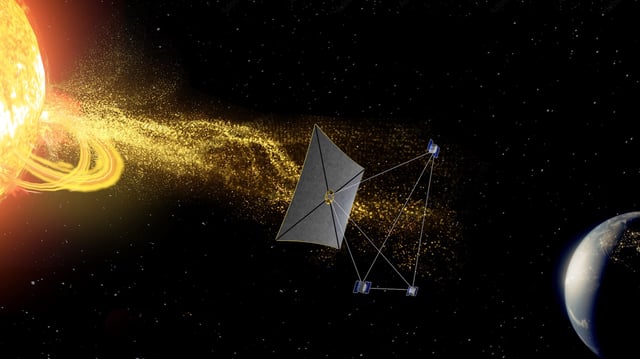Overview
- University of Michigan’s peer‑reviewed study in The Astrophysical Journal shows small to mesoscale flux ropes can carry southward magnetic fields strong enough to trigger geomagnetic storms.
- The modeling finds these vortices form as coronal mass ejections plow through slower solar wind and can intensify during collisions with neighboring streams.
- Single‑spacecraft measurements near the Sun–Earth L1 point can miss off‑axis or redirected flux ropes, creating a forecasting blind spot.
- The SWIFT concept envisions four probes about 200,000 miles apart in a pyramid around L1 with a sunward hub to sample the solar wind’s structure and speed warnings by roughly 40%.
- A solar sail based on NASA’s Solar Cruiser could hold the apex beyond L1 without fuel, and the concept remains under development after 2024 storm disruptions underscored the need; the study was funded by NASA and the National Science Foundation.
